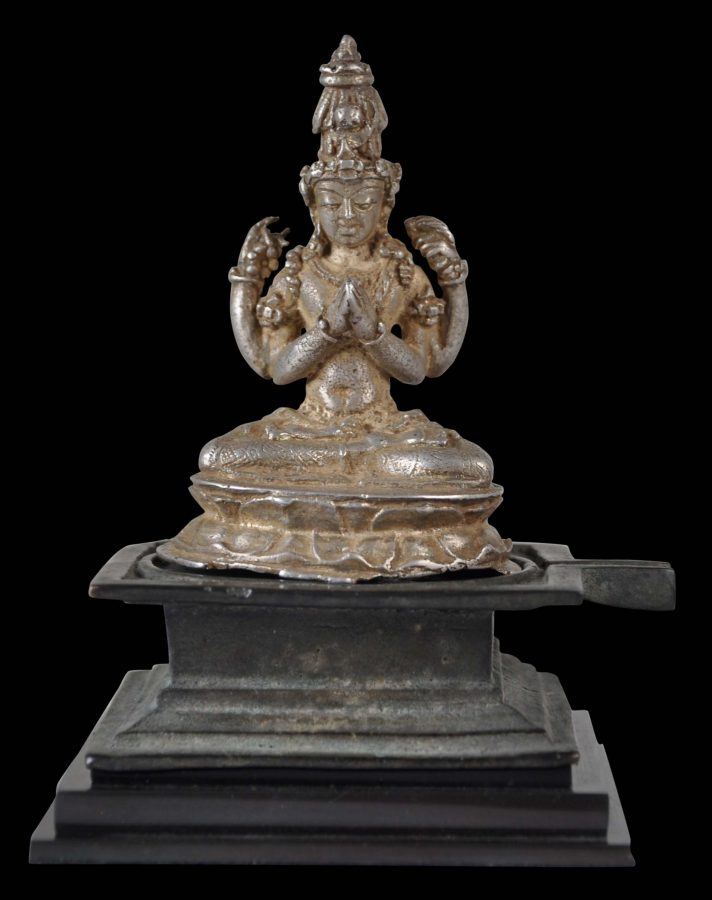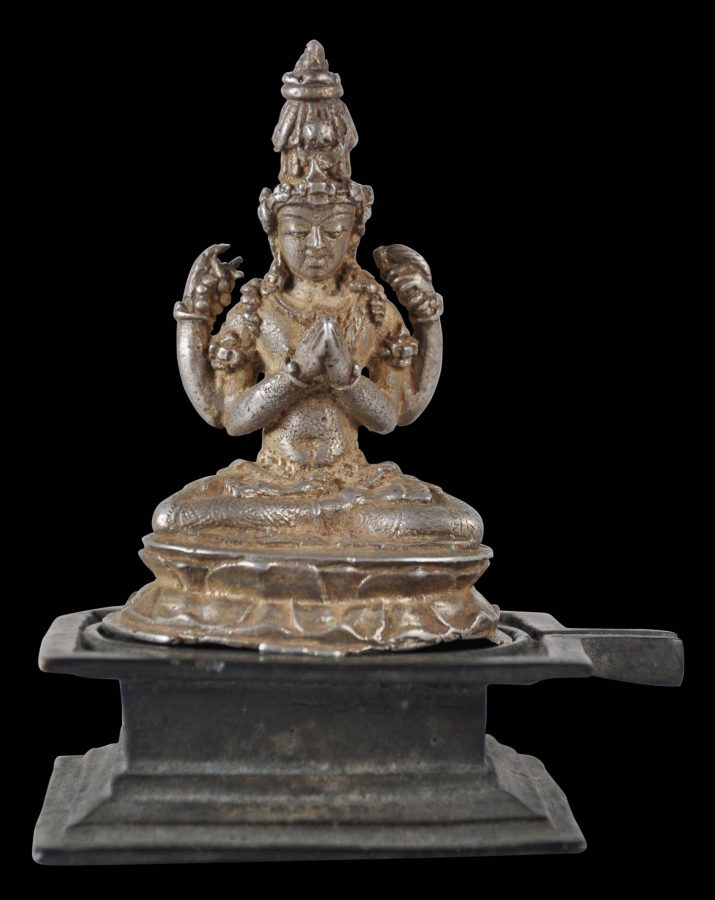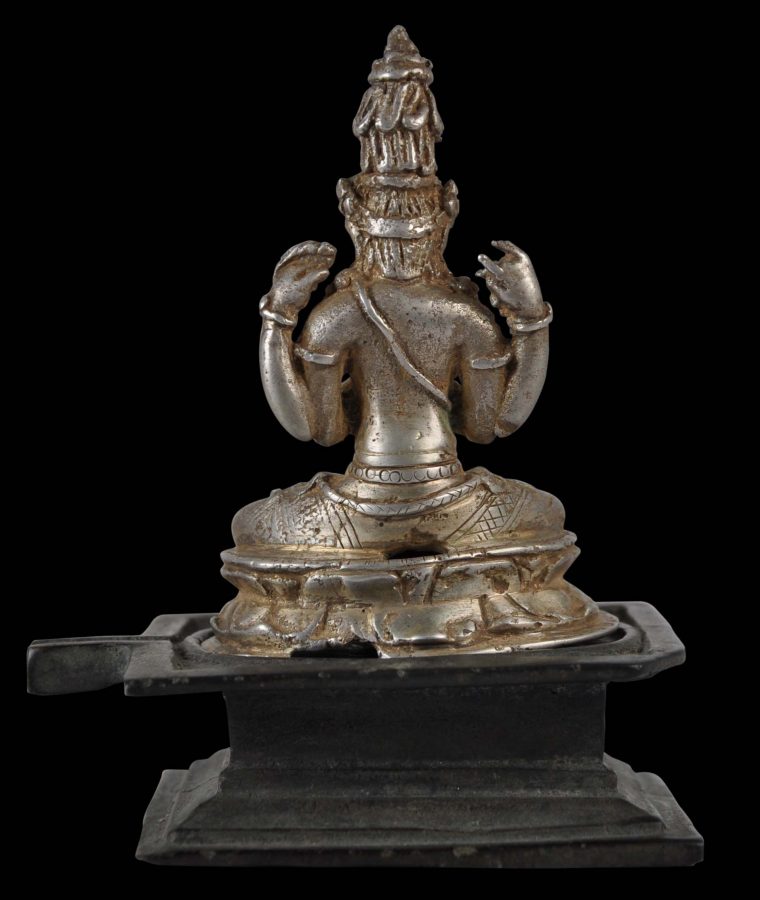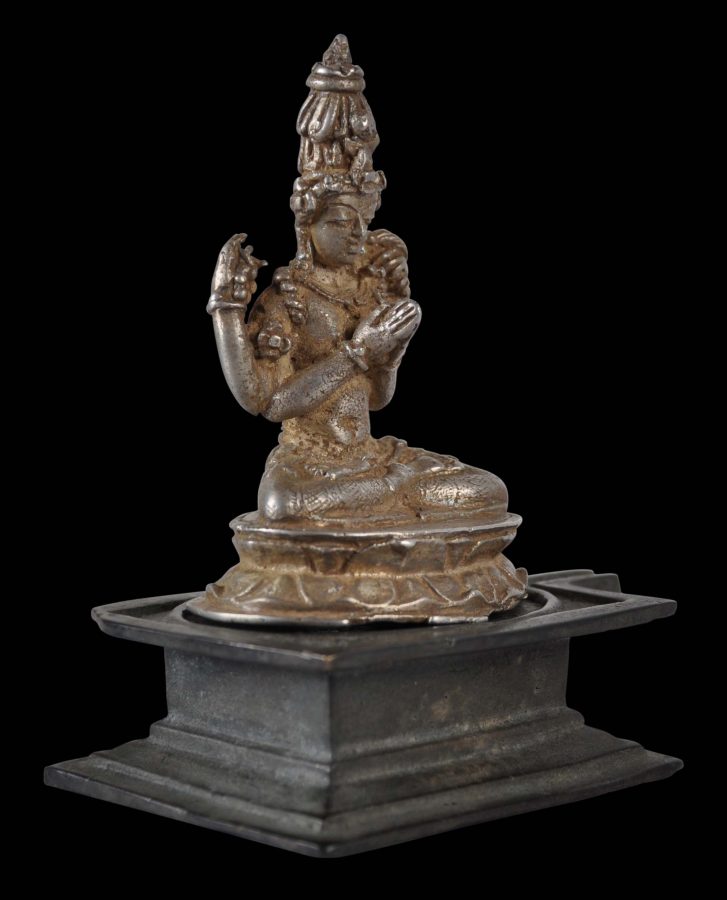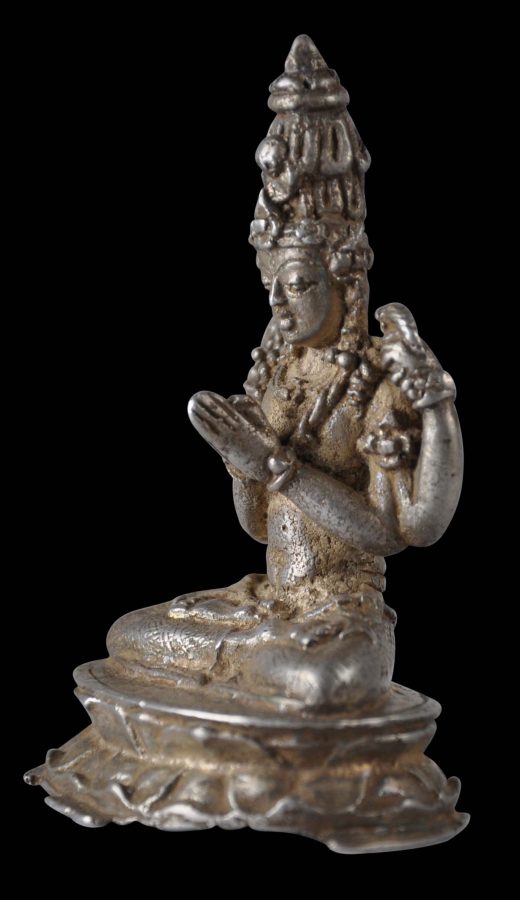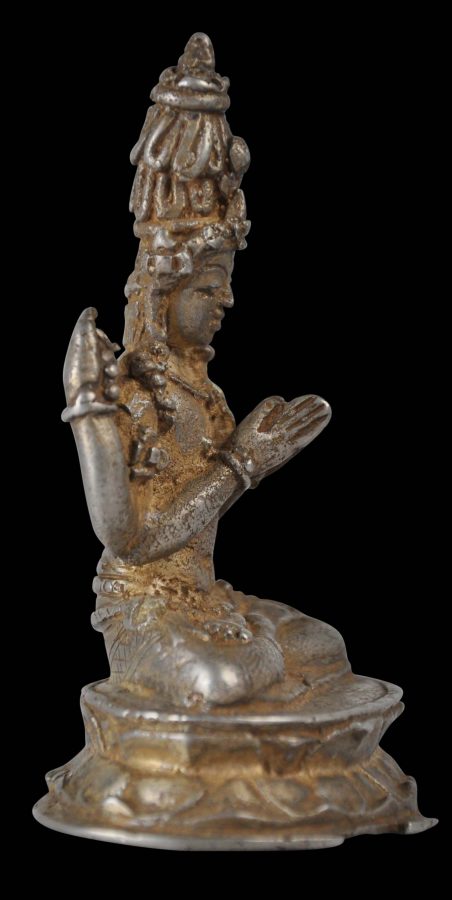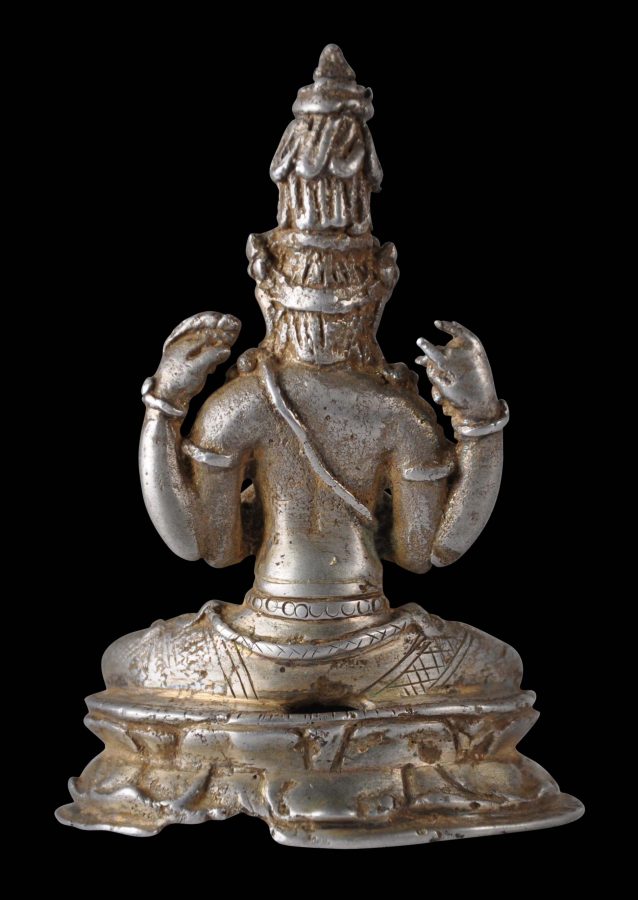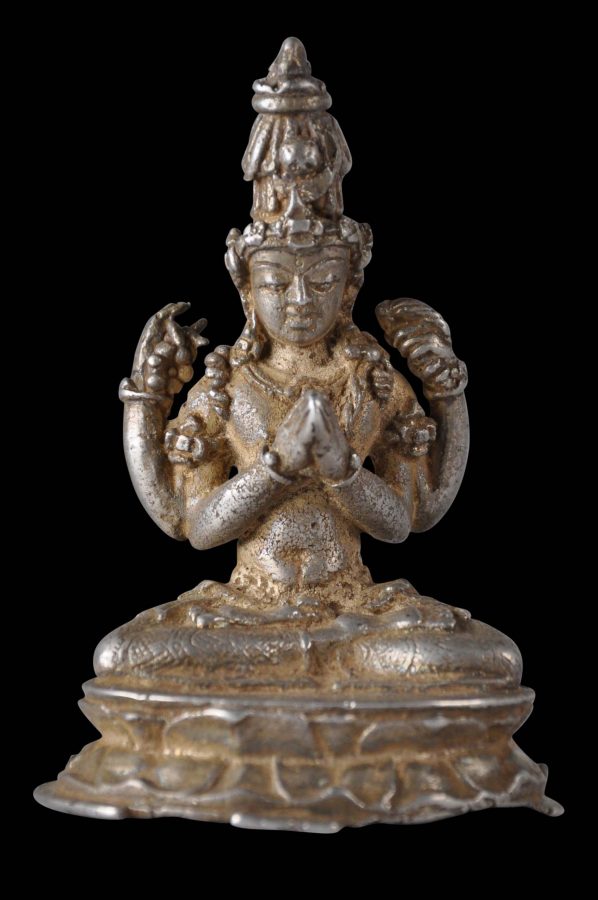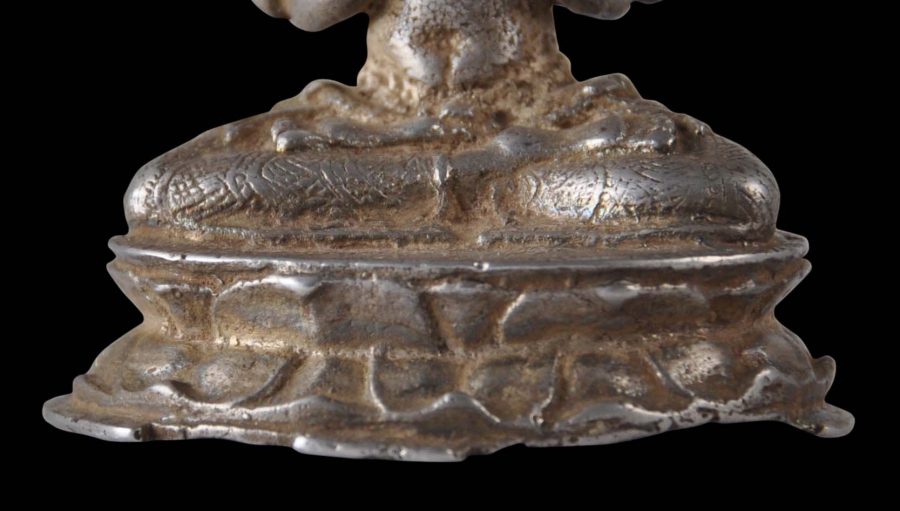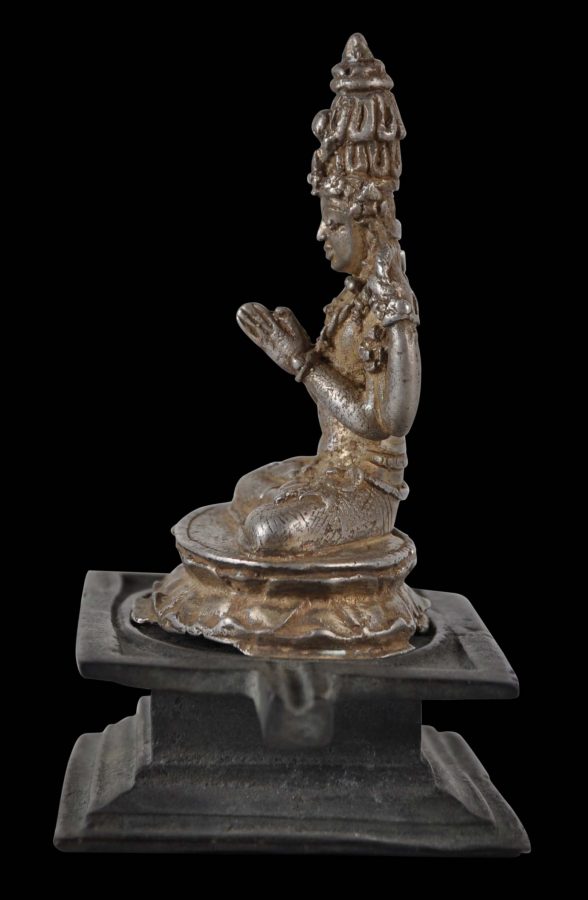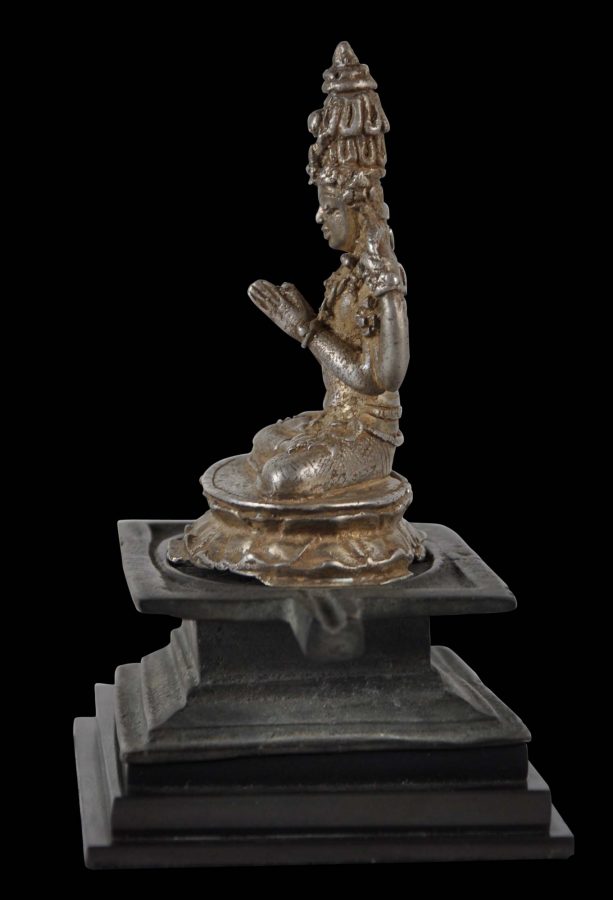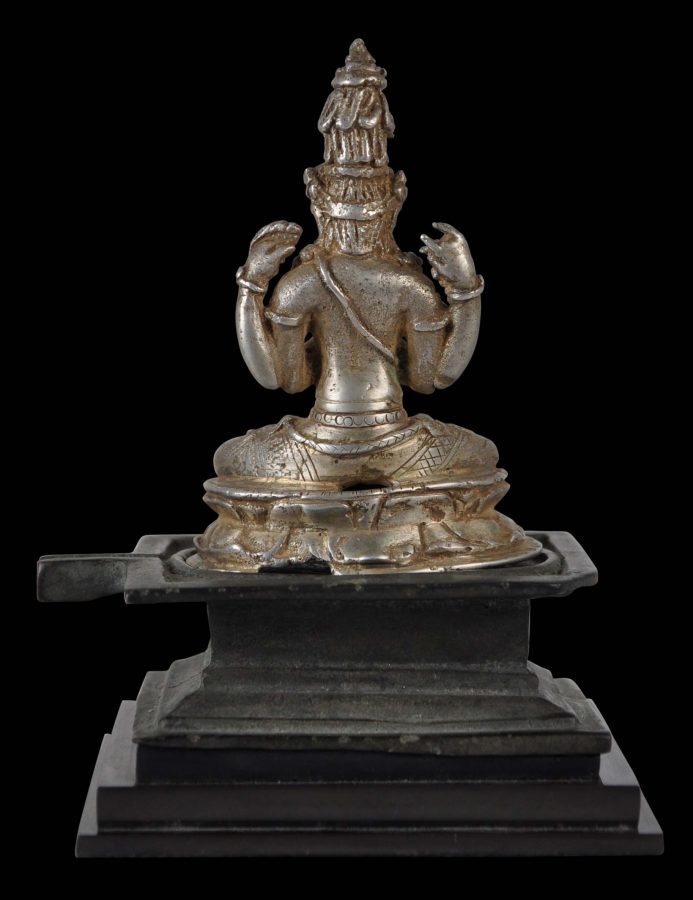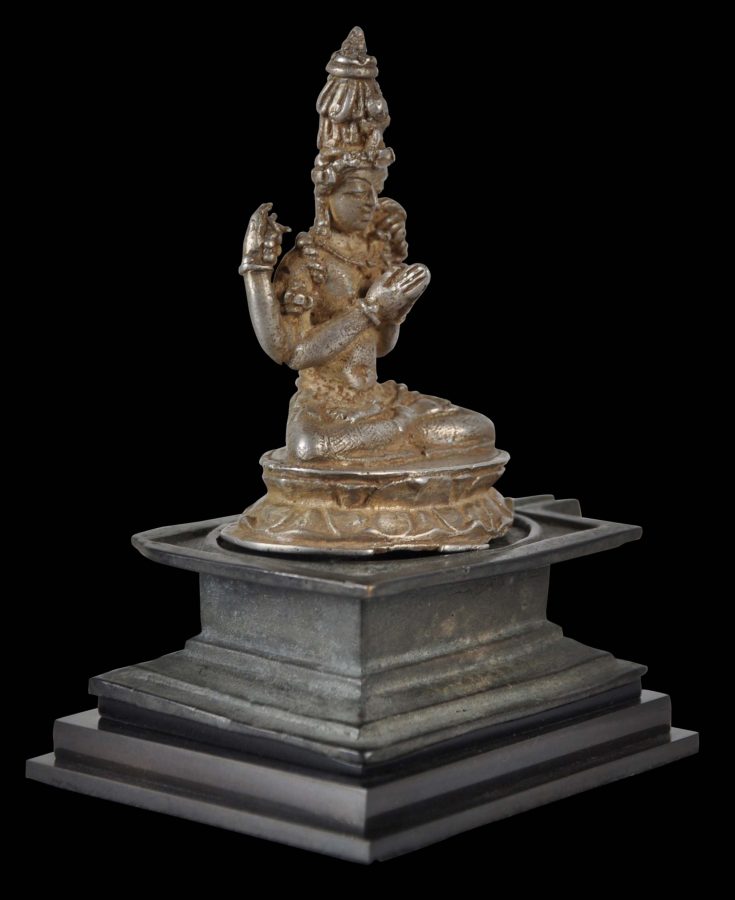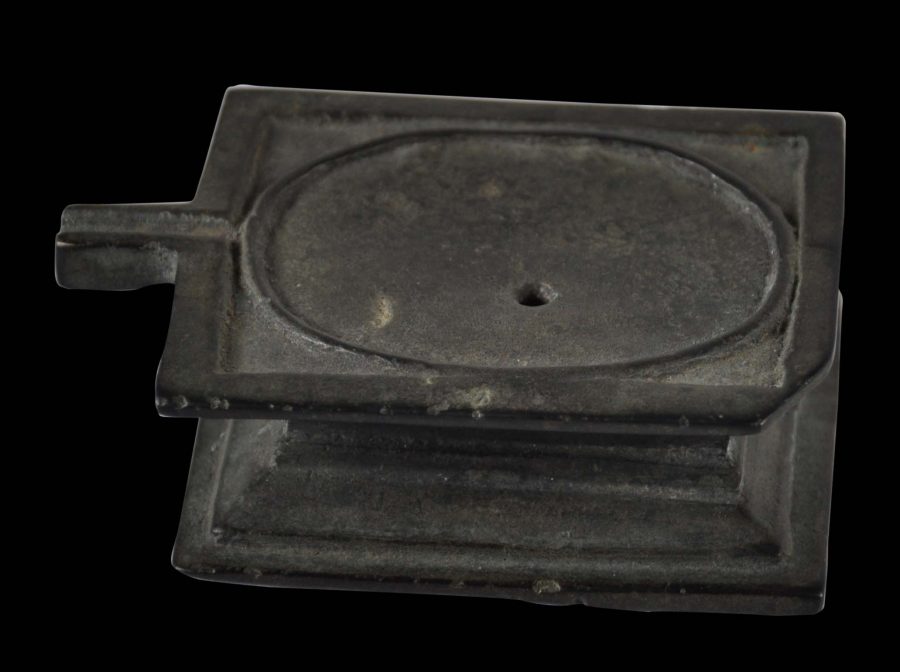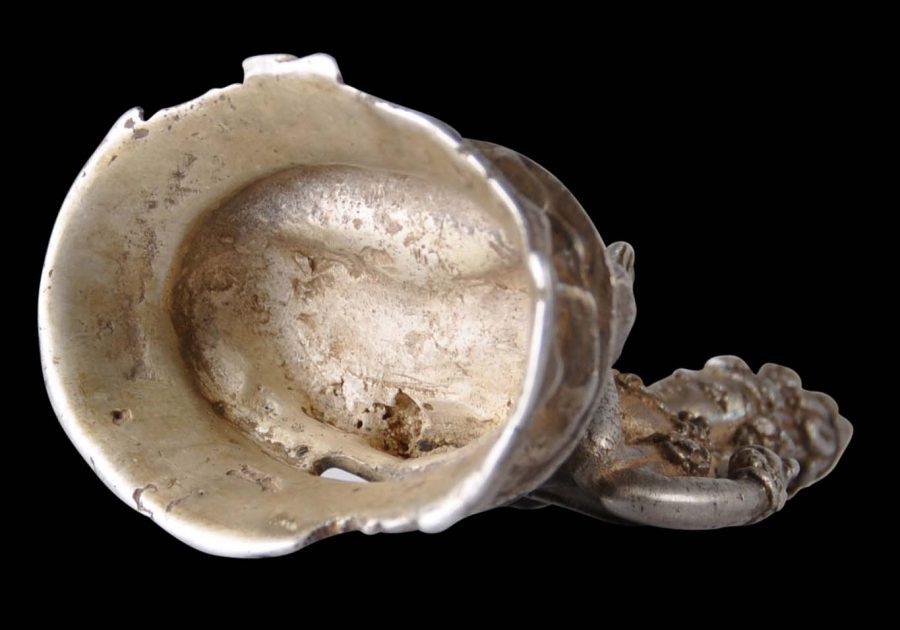Enquiry about object: 9458
Javanese Cast Silver Image of Shiva with Bronze Yoni Base
Central Java, Indonesia Classical Period, 9th century
height of Shiva: 8.3cm, ensemble height (with stand): 11.6cm, weight of Shiva: 146g
Provenance
Private collection, London, UK. Acquired in the UK around 2001.
This rare and particularly fine silver figure of Shiva, four armed, and seated in vajrasana on a double lotus throne atop a rectangular bronze yoni base, has been cast and finished with particularly crisp detailing, including jewellery and patterning on the robes. Additionally, there is a tiger skin wrapped around the waist.
The upper left hand holds a fly whisk, the upper right what might be a lotus, and the other two hands are clasped in anjalimudra. The hair is matted and piled high, and a third eye is visible on the forehead.
The face is serene and contemplative.
A hole in the back suggests a missing backplate.
The associated waisted bronze yoni base has an oval recess into which the oval base of the Shiva figure sits. The two seem to go together well, and appear to have been made for each other.
See Lerner (1985, p. 120-121) for a related silver bodhisattva image, possibly Vajrapani, attributed to 9th century Central Java and now in the Kronos Collection.
The yoni base sits on a high-quality, custom-made stand.
Read our short essay about Srivijaya bronzes.
References
Fontein, J., et al, The Sculpture of Indonesia, National Gallery of Art, Washington, 1990.
Kempers, A.J.B., Ancient Indonesian Art, CPJ ven der Peet (Amsterdam), 1959.
Lerner, M., The Flame and the Lotus: Indian and Southeast Asian Art from the Kronos Collection, The Metropolitan Museum of Art, 1985.
Lerner, M. & S. Kossak, The Lotus Transcendent: Indian and Southeast Asian Art from the Samuel Eilenberg Collection, The Metropolitan Museum of Art, New York, 1991.
Lunsingh Scheurleer, P., & M.J. Klokke, Ancient Indonesian Bronzes: A Catalogue of the Exhibition in the Rijksmuseum Amsterdam with a General Introduction, E.J. Brill, 1988.


